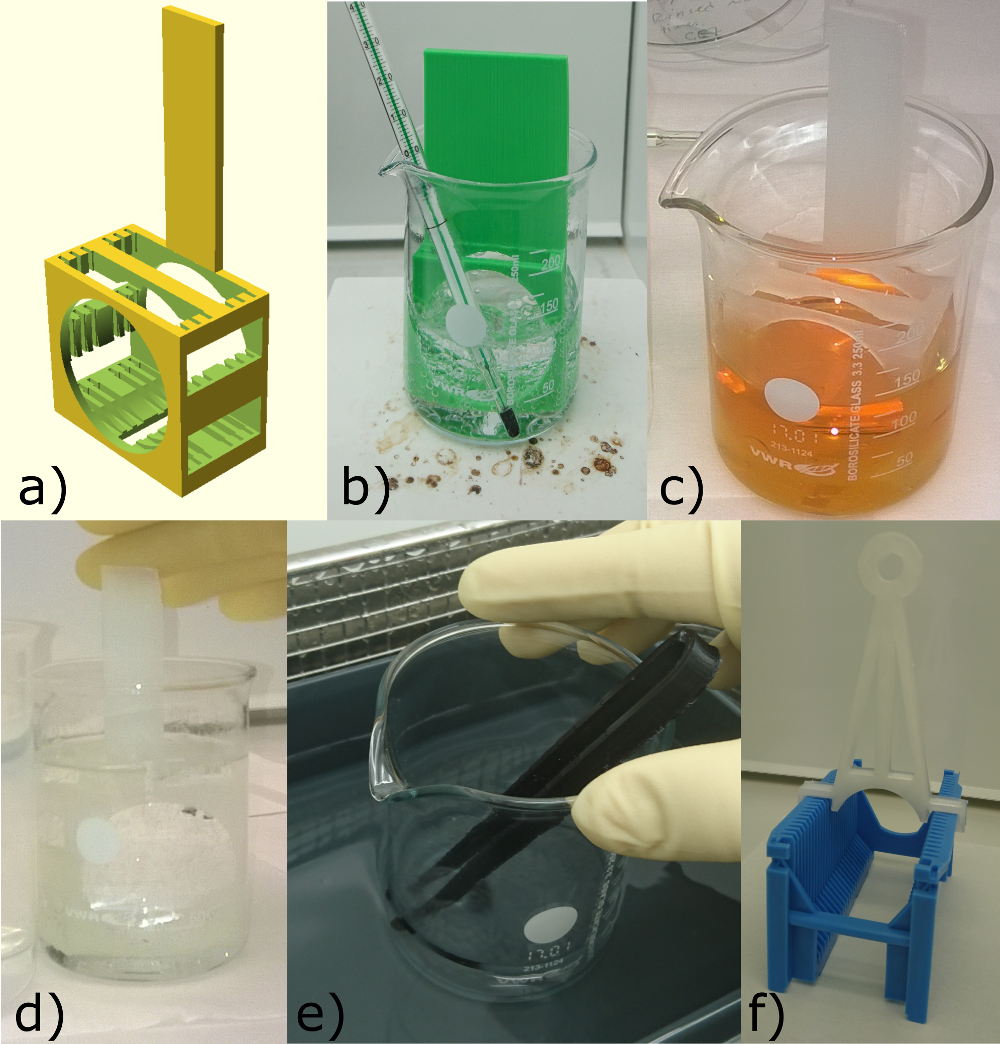Source
- 3. Ismo T. S. Heikkinen, Christoffer Kauppinen, Zhengjun Liu, Sanja M. Asikainen, Steven Spoljaric, Jukka V. Seppälä, Hele Savin, and Joshua M. Pearce. Chemical Compatibility of Fused Filament Fabrication -based 3-D Printed Components with Solutions Commonly Used in Semiconductor Wet Processing. Additive Manufacturing (in press). DOI: https://doi.org/10.1016/j.addma.2018.07.015 [open access]

Abstract
3-D printing shows great potential in laboratories for making customized labware and reaction vessels. In addition, affordable fused filament fabrication (FFF)-based 3-D printing has successfully produced high-quality and affordable scientific equipment, focusing on tools without strict chemical compatibility limitations. As the additives and colorants used in 3-D printing filaments are proprietary, their compatibility with common chemicals is unknown, which has prevented their widespread use in laboratory chemical processing. In this study, the compatibility of ten widely available FFF plastics with solvents, acids, bases and solutions used in the wet processing of semiconductor materials is explored. The results provide data on materials unavailable in the literature and the chemical properties of 3-D printable plastics that were, are in line with literature. Overall, many 3-D printable plastics are compatible with concentrated solutions. Polypropylene emerged as a promising 3-D printable material for semiconductor processing due to its tolerance of strongly oxidizing acids, such as nitric and sulfuric acids. In addition, 3-D printed custom tools were demonstrated for a range of wet processing applications. The results show that 3-D printed plastics are potential materials for bespoke chemically resistant labware at less than 10% of the cost of such purchased tools. However, further studies are required to ascertain if such materials are fully compatible with clean room processing.
Keywords
3-D printing chemical compatibility semiconductor wet processing custom labware clean rooms
See Also
- Mechanical Properties of Components Fabricated with Open-Source 3-D Printers Under Realistic Environmental Conditions
- The Effects of PLA Color on Material Properties of 3-D Printed Components
- Viability of Distributed Manufacturing of Bicycle Components with 3-D Printing: CEN Standardized Polylactic Acid Pedal Testing
- Open source rapid prototyping of OSAT
- RepRap Mechanical Testing Literature Review
- Tensile_test_protocol:_MOST
- Environmental life cycle analysis of distributed 3-D printing and conventional manufacturing of polymer products
- Recyclebot
- Life cycle analysis of distributed recycling of post-consumer high density polyethylene for 3-D printing filament
- Recyclebot on RepRap wiki
- Mechanical testing of polymer components made with the RepRap 3-D printer
- Development and feasibility of applications for the RepRap 3-D printer
- Life cycle analysis of distributed polymer recycling
- Solar powered distributed customized manufacturing
- MOST RepRap Build
- Life cycle analysis of distributed polymer recycling
- Applications of RepRap distributed production - literature review
- What is the influence of infill %, layer height and infill pattern on my 3D prints?
- A few ways to strengthen 3D printed parts - STEP 3D (really nice summary of methods to strengthen parts)
- Tensile Strength of Commercial Polymer Materials for Fused Filament Fabrication 3-D Printing
Future
- Toward improvement of the properties of parts manufactured by FFF (Fused Filament Fabrication) through understanding the influence of temperature and rheological behaviour on the coalescence phenomenon http://aip.scitation.org/doi/pdf/10.1063/1.5008034
- ANALYSIS OF EFFECT OF INTERNAL STRUCTURES ON TENSILE STRENGTH OF THE FDM PARTS http://acadpubl.eu/jsi/2017-115-6-7/articles/6/16.pdf





